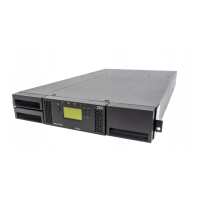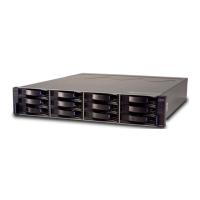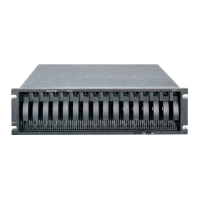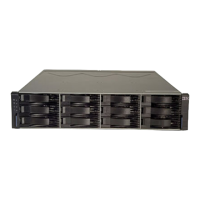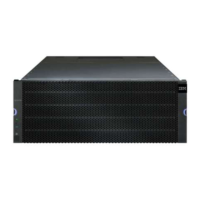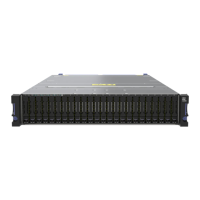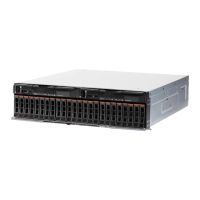Glossary D-3
deserialize. To change from serial-by-bit to
parallel-by-byte.
detented. A part being held in position with a catch or
lever.
device. Any hardware component or peripheral, such
as a tape drive or tape library, that can receive and send
data.
device driver. A file that contains the code needed to
use an attached device.
DH group. Diffie-Hellman group.
DIAG. Diagnostic section of maintenance information
manual.
differential. See High Voltage Differential (HVD).
direct access storage. A storage device in which the
access time is independent of the location of the data.
DNS. Directory Name System. This allows the library
to recognize text-based addresses instead of numeric IP
addresses.
download. (1) To transfer programs or data from a
computer to a connected device, typically a personal
computer. (2) To transfer data from a computer to a
connected device, such as a workstation or
microcomputer.
DRAM. Dynamic random-access memory.
drive, magnetic tape. A mechanism for moving
magnetic tape and controlling its movement.
DRV.Drive.
DSA key. Encryption key type.
DSE. Data security erase.
DSP. Digital signal processor.
E
EBCDIC. Extended binary-coded decimal interchange
code.
EC. Edge connector. Engineering change.
ECC. Error correction code.
EEPROM. Electrically erasable programmable
read-only memory.
EIA. Electronics Industries Association.
EIA unit. A unit of measure, established by the
Electronic Industries Association, equal to 44.45
millimeters (1.75 inches).
eject. To remove or force out from within.
EKM.See encryption key manager.
electronic mail. Correspondence in the form of
messages transmitted between user terminals over a
computer network.
e-mail.See electronic mail.
encryption. A method of storing data in a format that
helps protect data from inadvertent or deliberate
compromise.
encryption key manager (EKM). A Java software
program that assists IBM-encrypting tape drives in
generating, protecting, storing, and maintaining
encryption keys that encrypt information written to and
decrypt information read from tape media.
EPO.Emergency power off.
EPROM. Erasable programmable read only memory.
EQC.Equipment check.
equipment check. An asynchronous indication of a
malfunction.
Error log. A dataset or file in a product or system
where error information is stored for later access.
ESD. Electrostatic discharge.
ESP. Encapsulating Security Payload.
F
fault symptom code (FSC). A hexadecimal code
generated by the drive or the control unit microcode in
response to a detected subsystem error.
FC.Feature code.
FCC. Federal communications commission.
FE. Field engineer, customer engineer, or service
representative.
fiducial. A target used for teaching a physical location
to a robot.
field replaceable unit (FRU). An assembly that is
replaced in its entirety when any one of its components
fails.
file. A named set of records stored or processed as a
unit. Also referred to as a dataset.
file protection. The processes and procedures
established in an information system that are designed
to inhibit unauthorized access to, contamination of, or
deletion of a file.
